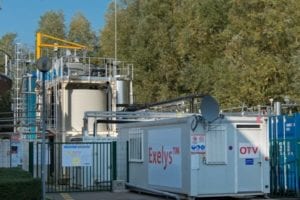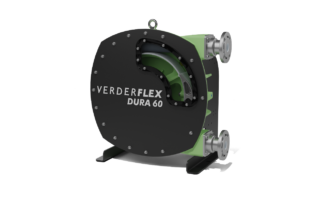Carbon footprints and escalating energy costs have led Veolia Water Solutions & Technologies, a subsidiary of the global Veolia Water (represented locally by Veolia Water Solutions & Technologies South Africa), to develop an innovative solution for harnessing the power of domestic sewage – effectively turning bio-waste from our sanitation network into a valuable and environmental fuel source.
The company has optimised a process known as thermo hydrolysis, which uses temperatures of between 150 and 190 degrees Celsius and pressures of between 6 and 15 bar to crack the long chain molecules typical of municipal sludge. This increases the reaction rate, making more bio-active carbon available than previously possible with more traditional technologies. Known as Exelys, this system has already been utilised in Veolia-built and operated plants in Europe and, at current levels of advancement, helps to turn roughly 1.2 mega litres of sewage into enough energy to supply one home for a month. “We recently estimated that in South Africa, up to 40% of a wastewater plant’s monthly expenses are directly spent on energy,” says Veolia Water Solutions & Technologies South Africa’s GM, Laurent Schmitt. “This technology is one way municipalities can reduce this on-going expense by up to 40%, while becoming global leaders in environmental wastewater treatment at the same time.” Exelysis currently the most effective energy enhancement methodology available to the market as it increases bio-gas production and lowers sludge volumes, while pasteurising the recovered sludge at the same time. It is proven to help sewage works reduce C02 emissions by between 10 and 30%, and returns on investment within an average of 9 years.“The goal behind this system is to achieve energy neutrality throughout our sanitation networks. With even further innovations, we should advance to a point where we can start to feed electricity into the national grid – which is a very environmental and clean-energy solution,” says Schmitt.
In addition to generating electricity from sewage, the company also helps to optimise energy consumption throughout a sewage treatment plant. With approximately 60% of all energy used up by secondary treatment (activated sludge), Veolia’s Amonit has become a popular solution to reduce costs and improve environmental performance. The system continuously measures NH4+ and NO3– during treatment and optimises nitrogen pollution elimination by means of continuous adjustment of the tank aeration intensities. This has helped plants to lower energy expenses associated with secondary treatment by only aerating the activated sludges as necessary, and not at full power at all times. “These are just some of many technologies Veolia Water has developed to help tip the energy balance in favour of self-reliance. This can have numerous knock-on effects, such as lower operating costs, higher standards of water treatment and improved environmental status,” concludes Schmitt.







